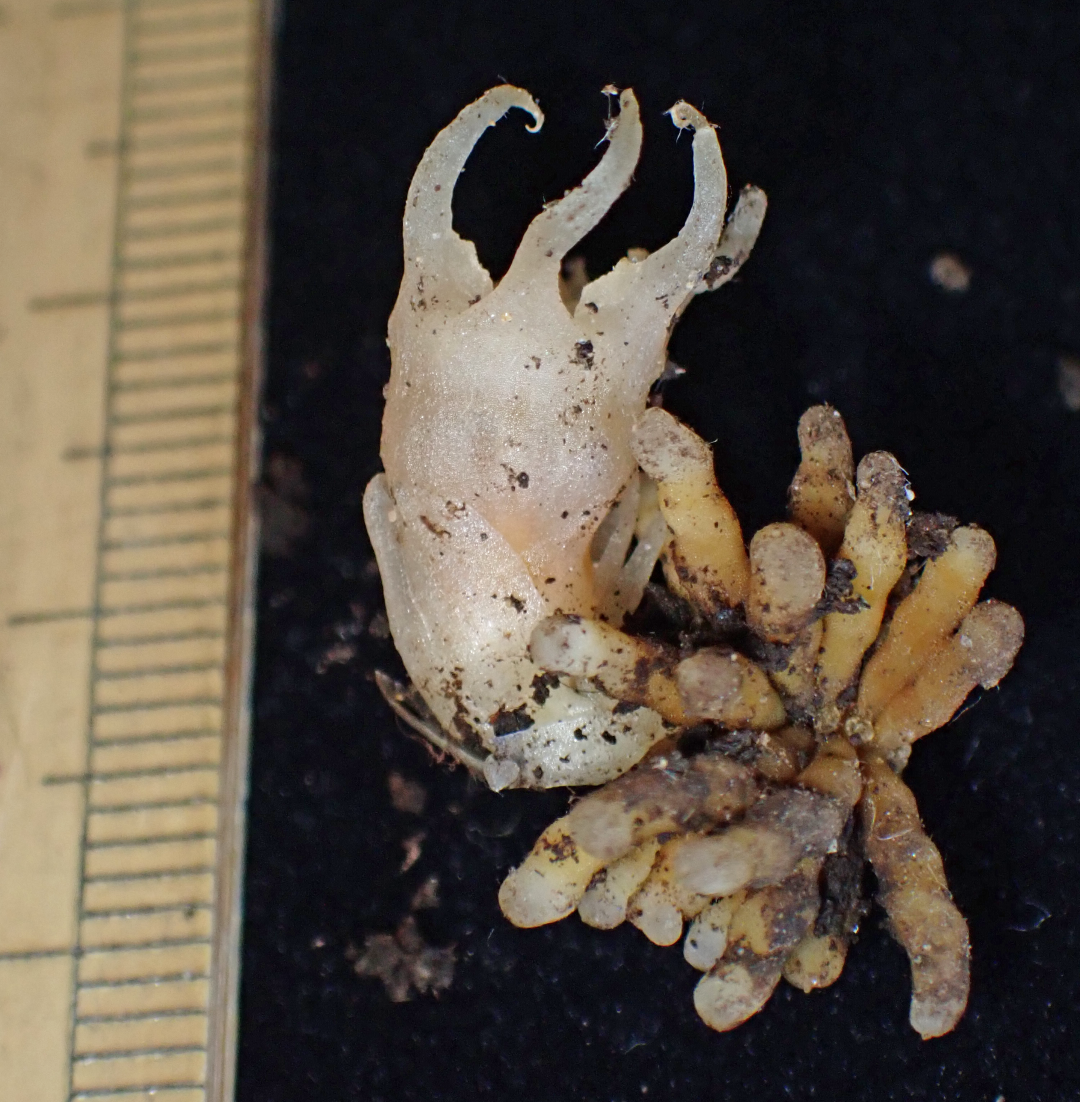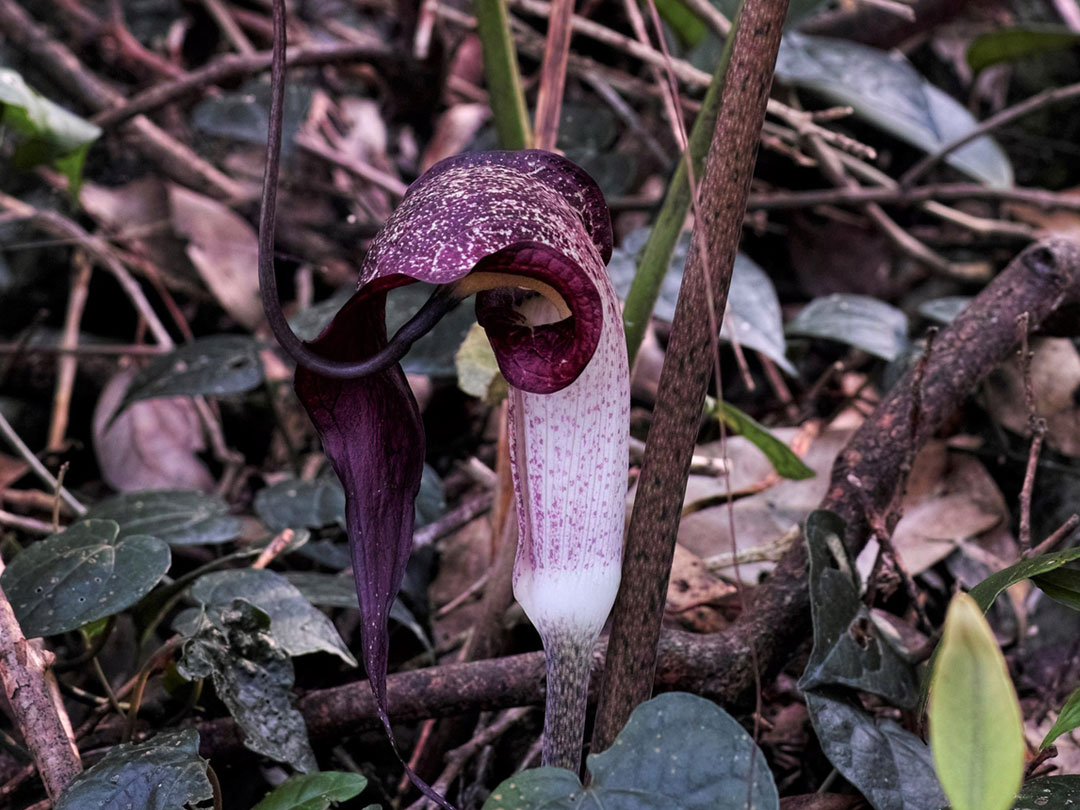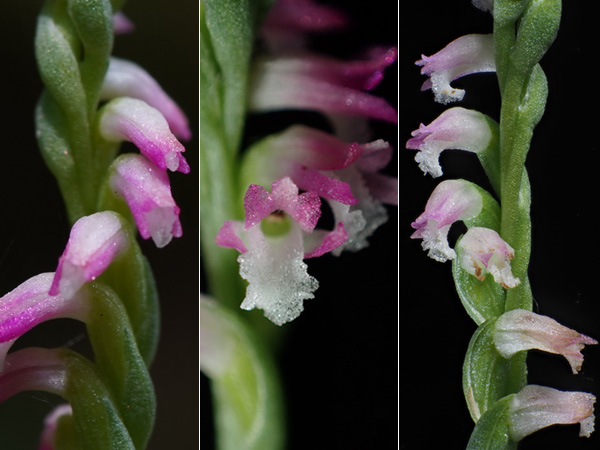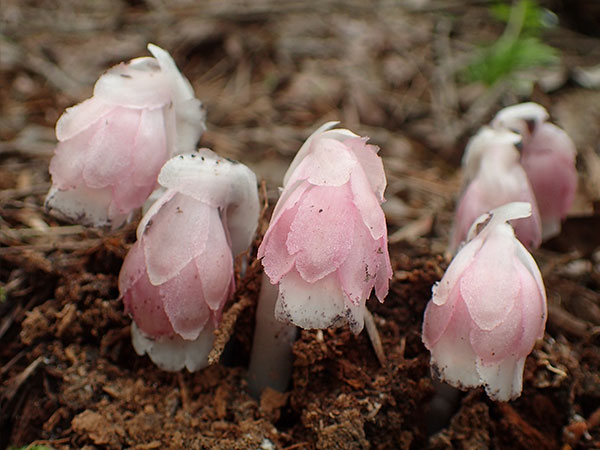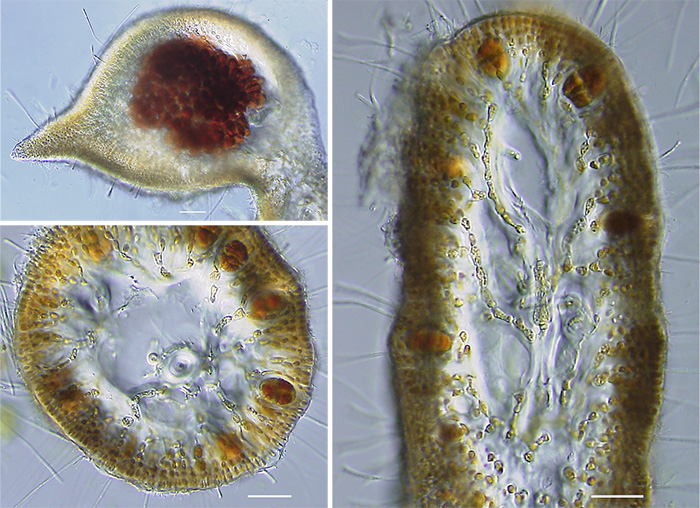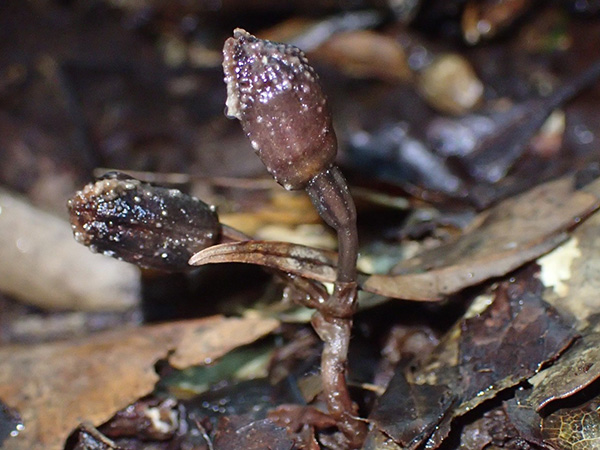New light has been shed on a misclassified vine species in the Ryukyu Islands of East Asia. This plant was first discovered in 1917 in Taiwan, when it was provisionally identified as Kadsura japonica. The plant was recently spotted again after 100 years, and further investigation proved that it was in fact a different species: Kadsura matsudae. The findings were published on June 30th in the online edition of Phytotaxa.
The discovery was made by Project Associate Professor SUETSUGU Kenji (Graduate School of Science, Kobe University), Mr. HSU Tian-Chuan (Taiwan Forestry Research Institute), independent botanical researcher Mr. TOMA Tsugutaka, Associate Professor MIYAKE Takashi (Faculty of Education, Gifu University) and Professor Richard Saunders (School of Biological Sciences, University of Hong Kong).
The Kadsura genus is an evergreen climbing plant of the Schisandraceae family. There are 16 known species of this genus, and until now K. japonica was the only species reported in Japan. K. japonica is also known as the kadsura vine or kadsura, and in the past its resin has been used for hair styling.
Independent botanical researcher Mr. Toma Tsugutaka realized that the Ryukyu Islands variety may be a different species after noticing that the kadsura vines in Okinawa often have yellow stamens, as opposed to the red stamens of kadsura in the rest of Japan (see figure 1). Mr. Toma notified Project Associate Professor Suetsugu, who then collaborated with Mr. Hsu, Associate Professor Miyake and Professor Saunders to examine specimens from the region. They discovered that the plants known as K. japonica included specimens with male flowers that were clearly different from the standard. In K. japonica, the anthers of adjacent stamens are connected, but in samples collected on Okinawa, Taiwan and other parts of the Ryukyu Islands, they discovered individuals without connections between the anthers of adjacent stamens.
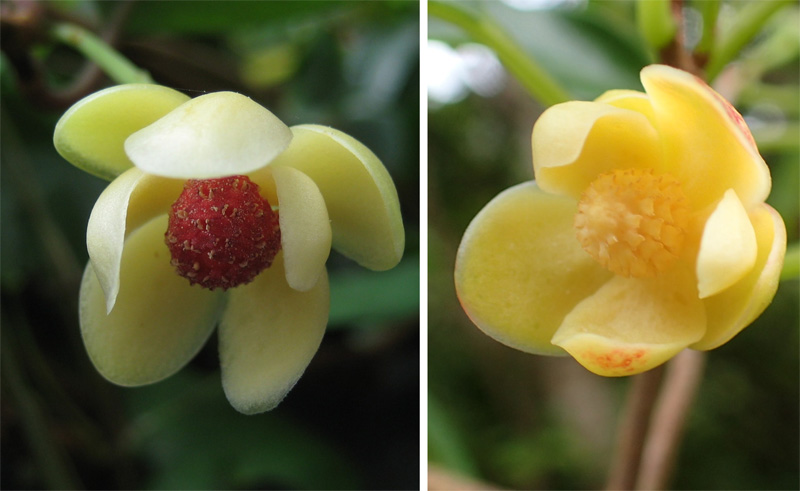
Left: the male flowers of the Kadsura japonica (Photo by MORI Sayoko)
Right: the male flowers of the Kadsura matsudae (Photo by TOMA Tsugutaka).
The stamen cluster in Kadsura japonica is always red, while the Kadsura matsudae is usually yellow (in rare cases it is red)
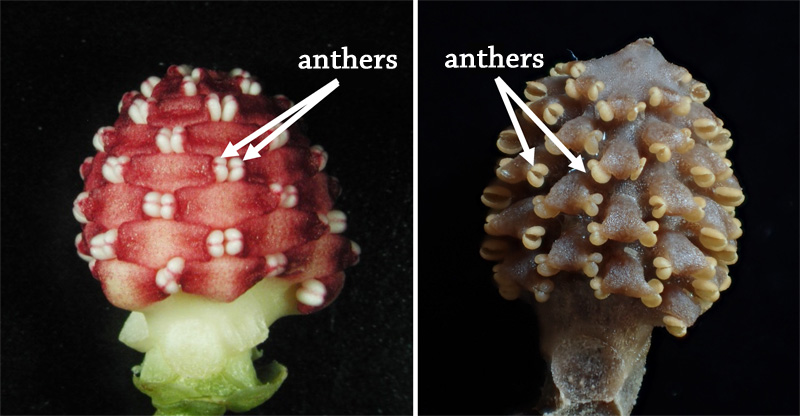
Left: Kadsura japonica (Photo by TAKAHASHI Hiroshi, Professor Emeritus at Gifu University)
Right: Kadsura matsudae (Photo by SUETSUGU Kenji). The neighboring anthers are connected in Kadsura japonica, but separate in Kadsura matsudae
After further investigation, they found that a plant with free-standing anthers had been reported in 1917 in Taiwan as K. matsudae. However, the original description of K. matsudae was brief and inaccurate, and since it did not mention the features of the stamen, it was provisionally classified as K. japonica. In this study, researchers used the specimen collected in Taiwan 100 years ago and newly-discovered specimens to carry out detailed analysis on a molecular level, including DNA barcoding. The results showed that this was a completely different plant from K. japonica.
Botanical surveys and research are advanced in Japan, and only a few new species are discovered each year. The discovery of a new woody vine species is particularly unusual.
The Ryukyu island chain stretches from Kyushu in southern Japan to Taiwan, and its subtropical and tropical ecosystems provide habitats for many species. Last year the Yanbaru forest of Okinawa was designated as part of the Yanbaru National Park, and the reclassification of Kadsura matsudae follows recent discoveries of two new orchid species in the area: Gastrodia nipponicoides and Gastrodia okinawensis. These findings further illustrate the importance of the Yanbaru forest’s diverse ecosystem.
Journal information
- Title
- “Emended description and resurrection of Kadsura matsudae (Schisandraceae)”
- DOI
- 10.11646/phytotaxa.311.3.5
- Authors
- Kenji Suetsugu, Tian-chuan Hsu, Tsugutaka Toma, Takashi Miyake, Richard M. K. Saunders
- Journal
- Phytotaxa






